|
0 Comments
It's been nearly one year since Chaturanga was released. |
| For the entire month of July, Chaturanga will be available on Smashwords as a FREE download! Watch the Trailer. |
How to get your free download:
1. Visit Smashwords.
(if you are not already a member, it is free to join).
2. Click "Buy" button to the right of Chaturanga.
3. Enter the coupon code: HP22Z.
4. Download your free e-Book of Chaturanga.
If you enjoy the book, I hope you will consider rating it and/or leaving a review on Smashwords.
1. Visit Smashwords.
(if you are not already a member, it is free to join).
2. Click "Buy" button to the right of Chaturanga.
3. Enter the coupon code: HP22Z.
4. Download your free e-Book of Chaturanga.
If you enjoy the book, I hope you will consider rating it and/or leaving a review on Smashwords.
An Interview with Patrick Eaton -- Lead Character in Chaturanga
| Wandering the ghostly ruins of ancient empires, braving sandstorms, tangling with spies and bandits… all while working to solve a family mystery steeped in geopolitical intrigue. To many of us, this might sound like the plot of a good novel. But for one local boy, these were just the highlights of his summer vacation. |
Less than one month after completing a dramatic journey across Central Asia, fourteen-year-old Patrick Eaton could easily be forgiven if he were still struggling to readjust to life back home. After all, he had spent nearly three months immersed in a land and culture vastly different from his own. But earlier this week, when I caught up with him in the cafeteria of Central High School, it appeared Eaton had already transitioned back into a typical American teenager.
“I couldn’t find my khakis this morning,” he said with a sheepish grin, arriving at our meeting in a wrinkled t-shirt, shorts, and flip-flops. He sat down across from me and lifted a threadbare baseball cap to reveal the shaggy hairstyle so popular with adolescents these days.
Having worked with teenagers before, I replied that it was okay; this was not a job interview. Besides, I added in a pitiful attempt to relate, it must be tough settling back into the cruel world of young adulthood. He just smiled and shook his head. “Actually, I just slept through my alarm this morning.”
Looking him over, I started to wonder if I was in the right place. My editor had hooked me with the tale of an American boy who accompanied his father on a business trip to Azerbaijan, and was then whisked along a hair-raising adventure on the Silk Road. Trekking across deserts and visiting far-flung oasis-cities, he had learned about the wider world and his place in it, surviving difficulties and dangers, and growing stronger and wiser as a result. Could this be that same boy?
“I couldn’t find my khakis this morning,” he said with a sheepish grin, arriving at our meeting in a wrinkled t-shirt, shorts, and flip-flops. He sat down across from me and lifted a threadbare baseball cap to reveal the shaggy hairstyle so popular with adolescents these days.
Having worked with teenagers before, I replied that it was okay; this was not a job interview. Besides, I added in a pitiful attempt to relate, it must be tough settling back into the cruel world of young adulthood. He just smiled and shook his head. “Actually, I just slept through my alarm this morning.”
Looking him over, I started to wonder if I was in the right place. My editor had hooked me with the tale of an American boy who accompanied his father on a business trip to Azerbaijan, and was then whisked along a hair-raising adventure on the Silk Road. Trekking across deserts and visiting far-flung oasis-cities, he had learned about the wider world and his place in it, surviving difficulties and dangers, and growing stronger and wiser as a result. Could this be that same boy?
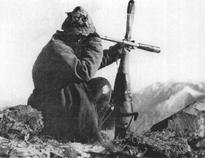
Chaturanga is a work of fiction, but the novel incorporates places, events, issues – and people – that are all too real. During his journey on the Silk Road, Patrick uncovers a legacy of exploration carved by earlier generations of Eaton men. One of these men was his great-grandfather, Thomas – someone Patrick never met but whose daring exploits nearly a century earlier grip the 14-year-old’s awe, stir his imagination, and cause him to wonder if he, too, has what it takes to call himself an Eaton.
Without a doubt, Patrick’s great-grandfather was an iconic explorer. “During the first half of the twentieth century, Thomas Eaton lived the kind of adventures that most people today could only imagine in books or movies.” His mental and physical toughness, self-assurance, knack for survival, and independence of thought are traits any boy would covet and wish to emulate.
But while this character might seem too good to be true, in fact several real-life explorers of Central Asia provided the inspiration for Thomas Eaton. Readers of Chaturanga will no doubt recognize aspects of each of the following men in the personality and daring feats of Patrick’s childhood hero.
Without a doubt, Patrick’s great-grandfather was an iconic explorer. “During the first half of the twentieth century, Thomas Eaton lived the kind of adventures that most people today could only imagine in books or movies.” His mental and physical toughness, self-assurance, knack for survival, and independence of thought are traits any boy would covet and wish to emulate.
But while this character might seem too good to be true, in fact several real-life explorers of Central Asia provided the inspiration for Thomas Eaton. Readers of Chaturanga will no doubt recognize aspects of each of the following men in the personality and daring feats of Patrick’s childhood hero.
Photo in the public domain.
Frederick Marshman (F.M.) Bailey (1882-1967) was a British intelligence officer and known as the last player of the Great Game. He began his career as a soldier, first serving in India and later in the Battle of Gallipoli during WWI (where he was wounded twice). Ultimately, he joined the Foreign and Political Department where he became a spy and traveled extensively through China, Tibet, and Central Asia. He is perhaps most famously known for his 1918 mission to Tashkent (in today’s Uzbekistan) to gather information on the newly formed Bolshevik regime. To escape the city, he impersonated a Cheka (Soviet secret police) officer who was pursuing… himself! Bailey survived the Great Game, continuing to serve His Majesty’s Government through WWII, and retiring an old man. Book recommendation: Mission to Tashkent, by F.M. Bailey.
Photo in the public domain.
Sven Hedin (1865-1952) truly was born to explore. In his autobiography, Sven writes that as a young boy living in Sweden, he obsessed over maps and the feats of great explorers, and even slept with the windows of his bedroom open to inure his body to the frigid night air. A trip to Azerbaijan as a young man catalyzed a career in exploration that lasted decades. Hedin carried out four lengthy expeditions to Central Asia, where he mapped the Himalayas (spending months at a time above 15,000 feet), discovered the sources of the Brahmaputra and Indus Rivers, often traveled in disguise to elude Tibetan authorities, and helped fill in some of the few remaining “white spots” on European maps. He also explored lower elevations, such as by undertaking numerous trips across the Taklamakan Desert to uncover long-lost Buddhist cities. One of these trips proved particularly disastrous after his guide became lost; Hedin’s party lost most of its men, and he literally crawled out of the desert to summon help for surviving members. Book recommendation: My Life as an Explorer, by Sven Hedin.
Photo: Roy Chapman Andrews on his horse, Kublai Khan. (Public domain)
Roy Chapman Andrews (1884-1960) – aka the “Dragon Hunter” – was a paleontologist famous for scouring the Gobi Desert for dinosaur fossils in the 1930s. His party was the first to utilize automobiles there (along with camels to carry extra supplies), which were driven deep into the unmapped and often dangerous interior of Mongolia. Along the way, Andrews discovered the first nest of dinosaur eggs, as well as Protoceratops, Oviraptor, and Velociraptor (made famous in Jurassic Park). Eventually, Andrews had to leave Central Asia due to its political instability. He went on to serve as director of the American Museum before retiring to write books for young readers. Today, Andrews is perhaps best remembered as the inspiration for Indiana Jones. Book recommendation: Dragon Hunter, by Charles Gallenkamp.
Photo source: www.maclean.org.
Sir Fitzroy Maclean (1911-1996) was a Scottish political officer, soldier, and writer, whose intrepid journeys across Central Asia (and various other places) are relayed in his autobiography, Eastern Approaches. On assignment to Moscow as a young man, Maclean became fascinated with Soviet Turkestan and was determined to explore it at any cost. Though off-limits to westerners, Maclean undertook several trips south to the oasis-cities of Bukhara and Samarkand, and east to the Tien Shan Mountains. Though frequently shadowed by Soviet secret police, Maclean made friends with all he met and was one of the few westerners to observe firsthand the devastation wrought by communism and Stalin’s political purges. Maclean went on to serve in the British SAS (special forces) in Africa and Yugoslavia during WWII, and he ultimately achieved the rank of brigadier. It is rumored that Maclean was the inspiration for Ian Fleming’s character, James Bond (007). Book recommendation: Eastern Approaches, by Fitzroy Maclean.
While these men probably never met – their journeys taking them to distinct corners of Central Asia – they shared many traits whose essence I hoped to capture in Thomas Eaton. All of them knew what they wanted in life and were determined to get it; none accepted the hurdles laid by nature or man, nor did they accept “no” in answer to their quests. They were each unwavering optimists who believed in themselves even when their situations seemed hopeless. They always treated other people – fellow expedition members, strangers they met along the way, and adversaries alike – with kindness and respect. They lead by example; not simply by issuing orders to others. And, as Patrick comes to discover for himself in Chaturanga, great explorers never stop putting one foot in front of the next in dogged perseverance of their dreams. They never quit and they never look back.
Andrew C. Katen
While these men probably never met – their journeys taking them to distinct corners of Central Asia – they shared many traits whose essence I hoped to capture in Thomas Eaton. All of them knew what they wanted in life and were determined to get it; none accepted the hurdles laid by nature or man, nor did they accept “no” in answer to their quests. They were each unwavering optimists who believed in themselves even when their situations seemed hopeless. They always treated other people – fellow expedition members, strangers they met along the way, and adversaries alike – with kindness and respect. They lead by example; not simply by issuing orders to others. And, as Patrick comes to discover for himself in Chaturanga, great explorers never stop putting one foot in front of the next in dogged perseverance of their dreams. They never quit and they never look back.
Andrew C. Katen
Revealing Turkey's Vulnerable Position on the Global Chessboard
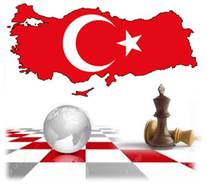
In a March 2014 article in Mining Engineering magazine, I played devil’s advocate by asking whether the risks of doing business in Turkey might outweigh those of sub-Saharan Africa. As of late-2013, when I submitted the article, Russia had not yet invaded nearby Crimea and the Syrian war was in its infancy. Back then, the idea that a modern, constitutional republic like Turkey could become as dicey for investors as conflict-ridden southern Africa might have seemed farfetched to some readers.
But events over the past two years have lent credibility to this proposition. More importantly, they have reaffirmed the usefulness of geopolitics for identifying macro trends and cycles that may be overlooked by other risk assessment methodologies.
In brief, my article (entitled "Geopolitics and the Strategic Risks to Mining") presented geopolitics as a uniquely valuable tool for identifying long-term or strategic business risks. Many of the publication’s readers are executives of companies that operate overseas and must, therefore, evaluate a wide variety of possible scenarios. I pointed out that because geopolitical assessment focuses on geography, historical patterns, and the interconnectedness of world events, it can highlight threats and opportunities that go unaddressed by risk assessments which put emphasis on current circumstances (e.g., present-day regimes, boundaries, government policies, economic conditions, and social issues).
Using Turkey as a case study, I offered two very different estimations of that country’s risk climate:
2. Based upon its geopolitical situation (i.e., taking into account geography
and history), Turkey appears to be relatively high-risk. It is situated on the
Anatolian Peninsula, a landmass that:
But events over the past two years have lent credibility to this proposition. More importantly, they have reaffirmed the usefulness of geopolitics for identifying macro trends and cycles that may be overlooked by other risk assessment methodologies.
In brief, my article (entitled "Geopolitics and the Strategic Risks to Mining") presented geopolitics as a uniquely valuable tool for identifying long-term or strategic business risks. Many of the publication’s readers are executives of companies that operate overseas and must, therefore, evaluate a wide variety of possible scenarios. I pointed out that because geopolitical assessment focuses on geography, historical patterns, and the interconnectedness of world events, it can highlight threats and opportunities that go unaddressed by risk assessments which put emphasis on current circumstances (e.g., present-day regimes, boundaries, government policies, economic conditions, and social issues).
Using Turkey as a case study, I offered two very different estimations of that country’s risk climate:
- Based upon its current political situation (i.e., taking into account the regime and policies of late-2013), Turkey appears to be relatively low-risk. The nation-state:
- Is a constitutional republic.
- Is modern and relatively secular.
- Possesses a strong legal framework.
2. Based upon its geopolitical situation (i.e., taking into account geography
and history), Turkey appears to be relatively high-risk. It is situated on the
Anatolian Peninsula, a landmass that:
- Has repeatedly been conquered by outside powers over millennia.
- Occupies the crossroads of Europe, Russia, Africa, and the Middle East.
- Serves as a cultural fault line between East and West.
- Sits astride a critical maritime chokepoint (Turkish Straits).
- Contains the headwaters of the Tigris and Euphrates Rivers (which feed Iraq and Syria).
- Is crisscrossed by oil and gas pipelines.
- Is threatened by Kurdish secession.
- Is the geographic and cultural heart of the Ottoman Empire.
- Features heavily in the grand strategies of Russia and Iran.
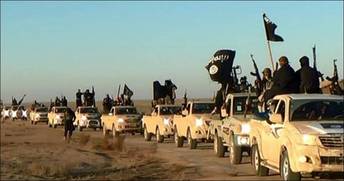
Turkey's deep-rooted geopolitical risks are more obvious now than they were in late-2013. Developments over the past two years have provided additional, tangible evidence that these risks are real and significant – and growing more acute:
While students of geopolitics might be startled by how rapidly Turkey’s situation has changed, they won’t be surprised by the direction in which it appears to be headed. On one hand, it is possible that the current conflicts in Ukraine, Syria, Kurdistan, and the Caucasus will abate, and perhaps Turkey’s situation will improve. On the other hand, for those who are listening, the beat of drums does not seem nearly as faint or far away as it did two years ago.
Takeaway: Recent developments involving Turkey underscore the value of geopolitics as a tool for identifying macro trends and strategic risks that are not addressed by other analytical methodologies. A country’s or region’s short-term political situation may be very different from its long-term geopolitical situation. While political, economic, and social issues of today can seem more tangible and acute, they can also hide less obvious but more significant concerns entrenched in geography, history, and culture.
(To view a slideshow presentation on this topic, click here.)
- Russia’s occupation of Crimea and intervention in Syria, and its increasing involvement in the Caucasus (thereby enclosing Turkey on three sides).
- Russian warplane downed by Turkey.
- Attacks by ISIS and Kurdish separatists within Turkey.
- Turkey’s efforts to suppress free speech and escalating domestic tensions.
While students of geopolitics might be startled by how rapidly Turkey’s situation has changed, they won’t be surprised by the direction in which it appears to be headed. On one hand, it is possible that the current conflicts in Ukraine, Syria, Kurdistan, and the Caucasus will abate, and perhaps Turkey’s situation will improve. On the other hand, for those who are listening, the beat of drums does not seem nearly as faint or far away as it did two years ago.
Takeaway: Recent developments involving Turkey underscore the value of geopolitics as a tool for identifying macro trends and strategic risks that are not addressed by other analytical methodologies. A country’s or region’s short-term political situation may be very different from its long-term geopolitical situation. While political, economic, and social issues of today can seem more tangible and acute, they can also hide less obvious but more significant concerns entrenched in geography, history, and culture.
(To view a slideshow presentation on this topic, click here.)
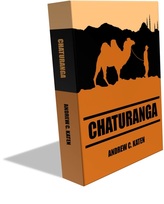
What does this have to do with Chaturanga?
Geopolitics is not just for companies, investors, or governments. Any student of international affairs can benefit from viewing world politics through the lenses of geography, history, and culture. Geopolitics offers an understandable, visual, “big picture” overview of what, where, and why certain political events and trends may develop – both over the short- and long-term. And it is versatile, too, meaning students can apply geopolitical methods to analyze any region or period of history.
Chaturanga presents these basic geopolitical concepts in a way that makes learning fun, interesting, and relevant. Told through the experiences and perspectives of 14-year-old Patrick Eaton, the story reveals how geography and history contribute to the current affairs of Turkey, the Caucasus, and Central Asia. During his adventures along the Silk Road, Patrick learns that these ancient regions occupy strategic positions on a global chessboard – a fact which has shaped their inhabitants’ recurring roles as both vanquishers and vanquished. He discovers why their vast mountains, deserts, and waterways have long served both as buffers and highways between empires. He sees that the artificial boundaries of the 20th century are slowly being pulled apart by the ancient forces of culture and ethnicity. And he understands why these regions’ natural resources and spider’s webs of highways and pipelines will continue to put them in the crosshairs of world powers. Indeed, Patrick comes to realize that these parts of the world, like so many others, are still very much defined by their geography and history.
©2016 Andrew C. Katen. All rights reserved.
Permission is granted to share this article with others, as well as to print or post it on other websites, so long as credit is given to the author.
Geopolitics is not just for companies, investors, or governments. Any student of international affairs can benefit from viewing world politics through the lenses of geography, history, and culture. Geopolitics offers an understandable, visual, “big picture” overview of what, where, and why certain political events and trends may develop – both over the short- and long-term. And it is versatile, too, meaning students can apply geopolitical methods to analyze any region or period of history.
Chaturanga presents these basic geopolitical concepts in a way that makes learning fun, interesting, and relevant. Told through the experiences and perspectives of 14-year-old Patrick Eaton, the story reveals how geography and history contribute to the current affairs of Turkey, the Caucasus, and Central Asia. During his adventures along the Silk Road, Patrick learns that these ancient regions occupy strategic positions on a global chessboard – a fact which has shaped their inhabitants’ recurring roles as both vanquishers and vanquished. He discovers why their vast mountains, deserts, and waterways have long served both as buffers and highways between empires. He sees that the artificial boundaries of the 20th century are slowly being pulled apart by the ancient forces of culture and ethnicity. And he understands why these regions’ natural resources and spider’s webs of highways and pipelines will continue to put them in the crosshairs of world powers. Indeed, Patrick comes to realize that these parts of the world, like so many others, are still very much defined by their geography and history.
©2016 Andrew C. Katen. All rights reserved.
Permission is granted to share this article with others, as well as to print or post it on other websites, so long as credit is given to the author.
By Andrew C. Katen
“There will be a time when you believe everything is finished.
That will be the beginning.”
– Louis L’Amour
“The age of oil is coming to an end,” repeated Mr. Girard, looking very somber in his tie, pressed shirt, and wire-rimmed glasses. He had just wrapped up a lecture about the future of the world economy . Now he sat on the corner of a student’s desk with his arms crossed over his chest. Loosening his tie with one hand, his eyes scanned the room of freshman history students for questions or comments. Aside from the clink of Jeff Hamilton’s pencil hitting the floor in the third row, the room was silent.
After a long pause, Mr. Girard sighed and added, “In the last two years, oil prices have dropped from over 100 dollars a barrel to 30 dollars. This proves the world no longer needs or wants oil. We are moving away from our dependence on fossil fuels.” After another pause, he asked, “Well? What do you think?”
Sitting in the back row, next to the windows, Patrick Eaton doodled in his notebook. As he sketched a landscape of mountains and deserts – his mind seemingly far away from the discussion at hand – it suddenly occurred to him that he might look bored. As Mr. Girard cast an eye over the class, no doubt making mental notes for assigning participation grades, Patrick realized that he might have already earned a zero for his apparent indifference. In reality, Patrick had reflected upon every word spoken during the past forty-five minutes. As he doodled, he was actually trying to summon the courage to share his own views in front of thirty of his peers.
Ultimately, however, Patrick decided to keep quiet. After all, what was the point? Mr. Girard was no fan of fossil fuels. He had made this perfectly clear at the beginning of the school year when Patrick shared that his dad was a petroleum geologist, and that they had spent the previous summer looking at oil and gas prospects in Central Asia. Since Patrick’s grade in the class was hovering around a B-minus, the last thing he needed was to provoke Mr. Girard into adding another C to his report card. In these situations, he knew from experience, it was often better to keep his eyes and ears open and his mouth shut.
As Mr. Girard began passing out worksheets, Patrick’s thoughts drifted back to the previous weekend, when his family had attended a barbecue hosted by his dad’s boss, Skip. Patrick had come to know and like this loud, gregarious Texan years ago. Last summer, during their adventure across Central Asia, the two had grown even closer. Patrick had discovered that Skip was not just funny and smart, but also attentive to Patrick’s intense hunger for knowledge. Even though Skip was a busy manager of an oil company, he always found time to address Patrick’s questions. “Let’s talk level,” Skip would answer in his Texan twang, as if he and Patrick were colleagues.
After a long pause, Mr. Girard sighed and added, “In the last two years, oil prices have dropped from over 100 dollars a barrel to 30 dollars. This proves the world no longer needs or wants oil. We are moving away from our dependence on fossil fuels.” After another pause, he asked, “Well? What do you think?”
Sitting in the back row, next to the windows, Patrick Eaton doodled in his notebook. As he sketched a landscape of mountains and deserts – his mind seemingly far away from the discussion at hand – it suddenly occurred to him that he might look bored. As Mr. Girard cast an eye over the class, no doubt making mental notes for assigning participation grades, Patrick realized that he might have already earned a zero for his apparent indifference. In reality, Patrick had reflected upon every word spoken during the past forty-five minutes. As he doodled, he was actually trying to summon the courage to share his own views in front of thirty of his peers.
Ultimately, however, Patrick decided to keep quiet. After all, what was the point? Mr. Girard was no fan of fossil fuels. He had made this perfectly clear at the beginning of the school year when Patrick shared that his dad was a petroleum geologist, and that they had spent the previous summer looking at oil and gas prospects in Central Asia. Since Patrick’s grade in the class was hovering around a B-minus, the last thing he needed was to provoke Mr. Girard into adding another C to his report card. In these situations, he knew from experience, it was often better to keep his eyes and ears open and his mouth shut.
As Mr. Girard began passing out worksheets, Patrick’s thoughts drifted back to the previous weekend, when his family had attended a barbecue hosted by his dad’s boss, Skip. Patrick had come to know and like this loud, gregarious Texan years ago. Last summer, during their adventure across Central Asia, the two had grown even closer. Patrick had discovered that Skip was not just funny and smart, but also attentive to Patrick’s intense hunger for knowledge. Even though Skip was a busy manager of an oil company, he always found time to address Patrick’s questions. “Let’s talk level,” Skip would answer in his Texan twang, as if he and Patrick were colleagues.
Whether your middle schooler likes to read or avoids it entirely, here are ten simple and effective ways to engage and encourage him to read more often.
Have more ideas? Please comment below or email me with your own tips – I will compile them in a follow up blog post. -- Andrew
- Connect books to life. If your reader likes Harry Potter, consider learning magic with him. If he likes Diary of a Wimpy Kid, help him create a journal. If he likes Hunger Games, go to an archery range. If he likes Chaturanga, learn secret code writing. If he likes mystery, create a dinner mystery at home. If his book has been made into a movie, ballet, or play, go see it. If he likes outdoor adventure books, go hiking or camping. Bringing a book to life through real-world activities is not just fun, it also helps your reader connect with story and characters on a deeper level.
- Create a “book culture.” Take your reader to book signings. Go to local author events. Research an author, his background and interests – maybe write him a letter and ask him questions (authors really do enjoy these). Schedule trips to the bookstore on Saturday mornings, during which you each get breakfast and coffee/hot chocolate, and read or peruse books for an hour.
- Go to a university library. Take your reader to the archives where the “old” books are kept. Imagine how much time and effort someone put into writing each one. See who can find the oldest (or weirdest) book. Look at the pictures. Smell the books. Look for ghosts. Then let your reader observe all the “cool” college kids reading at the library.
- Create a Summer Reading Challenge…for the entire family. Set a page count to be reached by the end of summer. Identify individual goals that are appropriate for each family member. Choose a fun reward to enjoy when the family reaches its goal (maybe a family rafting trip). Create a log so that reading progress can be tracked throughout the summer – review this at dinner time.
- Encourage your reader to create his own stories. These don’t have to be entirely original (you might notice they are based loosely on a book currently being read). Story-making unlocks imagination, nurtures appreciation of the creative process, and encourages outside-the-box thinking.
- Listen to books on tape. Take a minute to count up all the time you spend in the car together – on the way to and from school, the grocery, baseball practice, on trips, etc. Ask your reader to pick out a book on tape/CD from the library, and keep this in the car stereo. Every time you go somewhere, you can listen to another chapter. This offers a much better alternative to radio “noise,” helps your child transition to new activities, and provides a much needed escape from the reality of school and the dramatic lives of young adults.
- Let him read what he wants. If your reader is drawn only to Calvin and Hobbes, that’s fine. If he likes sports magazines, no problem. The goal is to encourage him to read, not to dictate what he reads. Kids are far more likely to read when they can pick what interests them. Besides, an astute parent knows that what a child chooses to read offers key information about his natural passions, interests, and gifts… pay attention to these selections, as they can provide invaluable direction when it comes time to select a college major or career years from now.
- Read what he is reading… and read with him. If your reader enjoys Harry Potter, read Harry Potter. If he likes history, adventure, and travel, read Chaturanga. And better yet, read a chapter or two every night with him. This activity shows love, respect, and interest in your reader.
- Let him see you reading. If you want your child to read, model reading. Turn off the television and unplug the internet. Make a cup of cocoa and a snack, put on some classical music if you’d like, and read. Or pack a picnic, go to the park, and pick out a nice shade tree.
- Get an evaluation. If your child avoids reading altogether, complains about his eyes hurting, skips (or rereads) lines, inserts (or misses words), or has difficulty recounting what he has read…. consider having him evaluated to rule out a visual processing problem or other challenge that may negatively impact his ability to read.
Have more ideas? Please comment below or email me with your own tips – I will compile them in a follow up blog post. -- Andrew
Last weekend was movie time at our house. Everybody was down with the flu, including my two toddler-aged children. When nobody feels like moving (not even their eyeballs), movies are an easy choice. But a tougher choice is which movies to watch.
For example, my boy loves dinosaurs. I mean, he is absolutely obsessed with dinosaurs! He can identify and pronounce all of them in his books, knows when each of them lived, distinguishes between carnivores, herbivores, and omnivores, and can even describe how big they were compared to modern objects. When we go to the library, he checks out dinosaur books. When we go to the museum, he looks at dinosaurs. When we get sick, he watches dinosaur movies.
But there’s one problem. He doesn’t want to read books or watch movies about cartoons or “unrealistic” dinosaurs. On the other hand, books and movies with “realistic” material are also chock-full of grisly death scenes, such as T-Rexes ripping each others' arms off, or a Gallimimus sticking its entire head into the carcass of a Brachiosaurus. Then there’s the endless discussion of the infamous asteroid that “wiped out the dinosaurs.”
Sure, it’s all science, but my boy doesn’t yet know how to make sense of sword-fighting, let alone cannibalism or apocalyptic destruction… and certainly not when it’s on every page or in every other movie scene. (Can you imagine what happens when an intellectually curious and emotionally sensitive toddler latches onto the idea that an asteroid could theoretically crash into the earth and kill every human on it?)
I’m not for a minute claiming that it is the responsibility of books or movie designers to tailor material to my boy's needs. But what I am highlighting, once again, is the difficulty of finding suitable material for young children with advanced intellectual interests.
It is with this challenge in mind that I wrote Chaturanga – a book that contains adult-level intellectual concepts but without violence or adult “emotional” themes. And I don’t think my family is alone in wanting these types of books. Just a few days ago, I received a message from a dad who is reading the book with his 10-year-old son! This testimonial pleased me beyond words – this is exactly the niche group I had in mind when I wrote the book.
So, to all you parents out there: Chaturanga is a book your young reader will be able to read and enjoy – and come away with a good understanding of history, geography, and current events – without you having to worry about any adult “surprises”!
For example, my boy loves dinosaurs. I mean, he is absolutely obsessed with dinosaurs! He can identify and pronounce all of them in his books, knows when each of them lived, distinguishes between carnivores, herbivores, and omnivores, and can even describe how big they were compared to modern objects. When we go to the library, he checks out dinosaur books. When we go to the museum, he looks at dinosaurs. When we get sick, he watches dinosaur movies.
But there’s one problem. He doesn’t want to read books or watch movies about cartoons or “unrealistic” dinosaurs. On the other hand, books and movies with “realistic” material are also chock-full of grisly death scenes, such as T-Rexes ripping each others' arms off, or a Gallimimus sticking its entire head into the carcass of a Brachiosaurus. Then there’s the endless discussion of the infamous asteroid that “wiped out the dinosaurs.”
Sure, it’s all science, but my boy doesn’t yet know how to make sense of sword-fighting, let alone cannibalism or apocalyptic destruction… and certainly not when it’s on every page or in every other movie scene. (Can you imagine what happens when an intellectually curious and emotionally sensitive toddler latches onto the idea that an asteroid could theoretically crash into the earth and kill every human on it?)
I’m not for a minute claiming that it is the responsibility of books or movie designers to tailor material to my boy's needs. But what I am highlighting, once again, is the difficulty of finding suitable material for young children with advanced intellectual interests.
It is with this challenge in mind that I wrote Chaturanga – a book that contains adult-level intellectual concepts but without violence or adult “emotional” themes. And I don’t think my family is alone in wanting these types of books. Just a few days ago, I received a message from a dad who is reading the book with his 10-year-old son! This testimonial pleased me beyond words – this is exactly the niche group I had in mind when I wrote the book.
So, to all you parents out there: Chaturanga is a book your young reader will be able to read and enjoy – and come away with a good understanding of history, geography, and current events – without you having to worry about any adult “surprises”!
I had the pleasure of visiting KAFM 88.1 Grand Junction a couple of weeks ago to talk about Chaturanga.
Host, Jeff Shuldener, and I discussed my inspiration for the book, intended audience, the process of writing an educational novel, and more.
Thanks to "Community Hour" for having me on the air!
Host, Jeff Shuldener, and I discussed my inspiration for the book, intended audience, the process of writing an educational novel, and more.
Thanks to "Community Hour" for having me on the air!
“Can you recommend a book for my middle schooler?
As an educator, I have heard this question numerous times from parents. Often, their inquiry is followed with this caveat: “My child is reading at the adult level, but I don’t want him reading other adult themes.” Of course, by “adult themes,” parents are referring to violence, tragedy, horror, profanity, or sex (both explicit and implied).
Without a doubt, it can be difficult for parents of gifted elementary and middle schoolers to find books that suit their children’s advanced interests, but which are also appropriate for their social and emotional needs. Despite their youth, gifted kids are often interested in the concepts that are usually found in adult books, and their advanced reasoning abilities mean that they can also comprehend these ideas. However, they don’t yet have the emotional maturity to deal with the “other” themes that are also contained in these books.
Another challenge for parents is that, while many young readers enjoy stories about teenage love or seek an escape to the world of fantasy and sci-fi (genres that are extremely popular and widely available), young gifted readers are increasingly drawn to the “real world” of politics, history, and current events. As a Social Studies teacher, I worked with 5th graders who were just as interested in an upcoming election, or Constitutional history, or a particular sociopolitical issue as they were in elves or dragons. On their desks, it was common to see an adult book written by a contemporary political critic sandwiched between Lord of the Rings or Ender’s Game. Unfortunately, there are much fewer young adult books that explore fact-based politics or current events than there are books about elves or dragons.
So what’s the parent of a gifted middle schooler to do? Well, it depends on your child’s reading interests. There are lots of great books out there that will stimulate the minds of middle school readers, while keeping the content emotionally appropriate.
Among many others, Chaturanga was written for young readers (and adults too) who seek a story of adventure, self-discovery and family values – and without tragedy, profanity, violence, and crude behavior.
Check out the “extras” page for links that identify other books suitable for young, gifted middle schoolers.
As an educator, I have heard this question numerous times from parents. Often, their inquiry is followed with this caveat: “My child is reading at the adult level, but I don’t want him reading other adult themes.” Of course, by “adult themes,” parents are referring to violence, tragedy, horror, profanity, or sex (both explicit and implied).
Without a doubt, it can be difficult for parents of gifted elementary and middle schoolers to find books that suit their children’s advanced interests, but which are also appropriate for their social and emotional needs. Despite their youth, gifted kids are often interested in the concepts that are usually found in adult books, and their advanced reasoning abilities mean that they can also comprehend these ideas. However, they don’t yet have the emotional maturity to deal with the “other” themes that are also contained in these books.
Another challenge for parents is that, while many young readers enjoy stories about teenage love or seek an escape to the world of fantasy and sci-fi (genres that are extremely popular and widely available), young gifted readers are increasingly drawn to the “real world” of politics, history, and current events. As a Social Studies teacher, I worked with 5th graders who were just as interested in an upcoming election, or Constitutional history, or a particular sociopolitical issue as they were in elves or dragons. On their desks, it was common to see an adult book written by a contemporary political critic sandwiched between Lord of the Rings or Ender’s Game. Unfortunately, there are much fewer young adult books that explore fact-based politics or current events than there are books about elves or dragons.
So what’s the parent of a gifted middle schooler to do? Well, it depends on your child’s reading interests. There are lots of great books out there that will stimulate the minds of middle school readers, while keeping the content emotionally appropriate.
Among many others, Chaturanga was written for young readers (and adults too) who seek a story of adventure, self-discovery and family values – and without tragedy, profanity, violence, and crude behavior.
Check out the “extras” page for links that identify other books suitable for young, gifted middle schoolers.
Chaturanga is now available in paperback and eBook format on Amazon and Smashwords.
Readers who purchase print copies receive a discount on the eBook!
Also, keep tabs on the latest on Goodreads. Your reviews are greatly appreciated!
Readers who purchase print copies receive a discount on the eBook!
Also, keep tabs on the latest on Goodreads. Your reviews are greatly appreciated!
The book is dedicated to my family. After all, it was fatherhood that inspired the story line, characters, and journey.
Certain books really sparked my fascination with Central Asia. One is Rudyard Kipling’s “Kim,” which I read as a boy. Another is Lutz Kleveman’s “The New Great Game,” which I read in grad school…
Back then, I never would have dreamt that Kleveman would eventually endorse my own book by referencing Kipling! I am honored beyond words by this praise.
“Chaturanga” has truly been an amazing journey!
Back then, I never would have dreamt that Kleveman would eventually endorse my own book by referencing Kipling! I am honored beyond words by this praise.
“Chaturanga” has truly been an amazing journey!
“Wherever he looked, eyes of all colors – hazel, olive, indigo, and ash gray – stared back. Kashgar truly was a crossroads of culture, Patrick marveled.”
(from Chaturanga)
Below is a resident of western China. His green eyes reveal a European heritage -- perhaps Roman or Greek from millennia earlier.
(from Chaturanga)
Below is a resident of western China. His green eyes reveal a European heritage -- perhaps Roman or Greek from millennia earlier.
"Hugging him on their final night together, Grandpa had said, 'You are an Eaton, Patrick, which means you must think and see for yourself. You come from a long line of explorers, but you must never forget that you are your own man."'
- from Chaturanga
- from Chaturanga
The book gets its name from an ancient strategy game that originated in India in the 5th century. The rules are complex, murky, and continually evolving…. making the game of “Chaturanga” an excellent analogy for the history and geopolitics of Central Asia.
For Immediate Release
Monday, January 25, 2016
INTRODUCING “CHATURANGA” – A YOUNG ADULT NOVEL ABOUT THE SILK ROAD
Grand Junction, CO, January 25, 2016 – Andrew C. Katen has announced the February 1, 2016, release of his new book, Chaturanga, a young adult novel that entertains while it educates readers about one of the oldest yet least understood regions of the world – Central Asia.
Chaturanga centers around Patrick Eaton, a fourteen-year-old who has been raised on the legendary tales of his forefathers, each intrepid explorers in their own time. As an American boy in the twenty-first century, Patrick doubts whether he will have the opportunity to follow in their footsteps. The surprising opportunity to accompany his geologist father on a business trip to Azerbaijan leads to an adventure that encompasses a secret journal, codes, political intrigue, buried treasures, and family legacies.
The novel has already received praise from experts in the fields of Silk Road history, geopolitics, and energy.
Francis O’Donnell, Emmy-nominated filmmaker of the PBS documentary In the Footsteps of Marco Polo, describes Chaturanga as a book that is “full of wanderlust and adventure, one that Marco Polo himself would have recognized and enjoyed.”
“[Chaturanga] is written with panache and great scope,” adds Lutz Kleveman, author of The New Great Game. “Like Kipling’s Kim, it takes the reader on a journey through little-known Central Asia, a part of the world still as fascinating as it was 150 years ago.”
Steven Gardner, 2015 President of the Society for Mining, Metallurgy, and Exploration, says, “[This book] will appeal not only to the young adult audience, but adults as well… Katen’s perception of both geopolitical history and current events will help readers understand what is going on in today’s world.”
While the subject matter of Chaturanga reflects Katen’s professional interests, it was ultimately fatherhood that inspired him to write a young adult novel. “As a parent, I wanted to create a story that’s fun, thought-provoking, and relevant – and without violence, profanity, or adult themes. I wrote a book that I would have enjoyed as a teen, and which I look forward to sharing with my own children.”
Andrew C. Katen is an educator, geopolitical analyst, and geologist who has taught middle school and college. He has published and presented on topics related to geopolitics and risk management. Katen holds an M.S. in national security studies and B.S. degrees in geology and biology. He lives with his wife and two children in Colorado. Chaturanga is his first novel.
For more information about Chaturanga and its author, please visit www.chaturangabook.com/press-kit or contact Andrew C. Katen at akaten@chaturangabook.com.
Chaturanga will be available for purchase in paperback or e-book format at Amazon.com on February 1, 2016.
###
Monday, January 25, 2016
INTRODUCING “CHATURANGA” – A YOUNG ADULT NOVEL ABOUT THE SILK ROAD
Grand Junction, CO, January 25, 2016 – Andrew C. Katen has announced the February 1, 2016, release of his new book, Chaturanga, a young adult novel that entertains while it educates readers about one of the oldest yet least understood regions of the world – Central Asia.
Chaturanga centers around Patrick Eaton, a fourteen-year-old who has been raised on the legendary tales of his forefathers, each intrepid explorers in their own time. As an American boy in the twenty-first century, Patrick doubts whether he will have the opportunity to follow in their footsteps. The surprising opportunity to accompany his geologist father on a business trip to Azerbaijan leads to an adventure that encompasses a secret journal, codes, political intrigue, buried treasures, and family legacies.
The novel has already received praise from experts in the fields of Silk Road history, geopolitics, and energy.
Francis O’Donnell, Emmy-nominated filmmaker of the PBS documentary In the Footsteps of Marco Polo, describes Chaturanga as a book that is “full of wanderlust and adventure, one that Marco Polo himself would have recognized and enjoyed.”
“[Chaturanga] is written with panache and great scope,” adds Lutz Kleveman, author of The New Great Game. “Like Kipling’s Kim, it takes the reader on a journey through little-known Central Asia, a part of the world still as fascinating as it was 150 years ago.”
Steven Gardner, 2015 President of the Society for Mining, Metallurgy, and Exploration, says, “[This book] will appeal not only to the young adult audience, but adults as well… Katen’s perception of both geopolitical history and current events will help readers understand what is going on in today’s world.”
While the subject matter of Chaturanga reflects Katen’s professional interests, it was ultimately fatherhood that inspired him to write a young adult novel. “As a parent, I wanted to create a story that’s fun, thought-provoking, and relevant – and without violence, profanity, or adult themes. I wrote a book that I would have enjoyed as a teen, and which I look forward to sharing with my own children.”
Andrew C. Katen is an educator, geopolitical analyst, and geologist who has taught middle school and college. He has published and presented on topics related to geopolitics and risk management. Katen holds an M.S. in national security studies and B.S. degrees in geology and biology. He lives with his wife and two children in Colorado. Chaturanga is his first novel.
For more information about Chaturanga and its author, please visit www.chaturangabook.com/press-kit or contact Andrew C. Katen at akaten@chaturangabook.com.
Chaturanga will be available for purchase in paperback or e-book format at Amazon.com on February 1, 2016.
###
“In Chaturanga, [Katen] makes learning fun… [his book] is full of wanderlust and adventure, one that Marco Polo himself would have recognized and enjoyed.”
- Francis O'Donnell, Artist, Author, Explorer &
Emmy Nominated filmmaker of the PBS documentary
"In the Footsteps of Marco Polo"
Chaturanga will be available for purchase in paperback and e-book format at Amazon.com on February 1, 2016.
Check out the book trailer below!
- Francis O'Donnell, Artist, Author, Explorer &
Emmy Nominated filmmaker of the PBS documentary
"In the Footsteps of Marco Polo"
Chaturanga will be available for purchase in paperback and e-book format at Amazon.com on February 1, 2016.
Check out the book trailer below!
With just two weeks until "Chaturanga" is released (Feb. 1), I am feeling very flattered by the advance praise given the book by experts in their respective fields. Thanks very much to all of you!
"In 'Chaturanga', Andrew C. Katen makes learning fun, he boils down very complex issues, geo - politics, ancient and modern history, international corporate strategy and more in a very digestible manner. Told through the eyes of his young protagonist it is full of wanderlust and adventure, one that Marco Polo himself would have recognized and enjoyed. The genius in it for me is his use of oil as the linchpin of his book, once trade goods such as silk, spices and precious gems animated the Silkroad, today oil is the lubricant reanimating that ancient route and is the Axis Mundi upon which the whole world now turns!"
- Francis O'Donnell, Artist, Author, Explorer &
Emmy Nominated filmmaker of the PBS documentary
"In the Footsteps of Marco Polo"
"What a great story. And, what a great way to encourage the interest of teenagers in history, politics, current events, geography, and economics."
- Larry Eubanks, Ph.D., Associate Professor of Economics
University of Colorado at Colorado Springs
“This novel tells an exciting story through a historical, cultural, political and contemporary narrative that will captivate, educate and stimulate young adults. The writing is fluid, informed, and imaginative. ”
– Hussein A. Amery, Ph.D., Colorado School of Mines,
Division of Liberal Arts and International Studies
"... an entertaining, heartwarming, hair-rasing, inspirational and educational journey into the world of energy exploration and intriguing geopolitics. Well done! I did not want it to end."
- Stephen Doyle, President, BtuBaron LLC
"...a delightful romp, an epic adventure. Engrossing, imaginative, and beautifully wrought, it is a tale of legend, lore and discovery that, like the best of books, will educate, fascinate, and resonate. Katen's book is one that you will keep, share, and one day, want your own children to read."
- Troy Matthew Carnes, teacher and
author of RASPUTIN'S LEGACY
"In 'Chaturanga', Andrew C. Katen makes learning fun, he boils down very complex issues, geo - politics, ancient and modern history, international corporate strategy and more in a very digestible manner. Told through the eyes of his young protagonist it is full of wanderlust and adventure, one that Marco Polo himself would have recognized and enjoyed. The genius in it for me is his use of oil as the linchpin of his book, once trade goods such as silk, spices and precious gems animated the Silkroad, today oil is the lubricant reanimating that ancient route and is the Axis Mundi upon which the whole world now turns!"
- Francis O'Donnell, Artist, Author, Explorer &
Emmy Nominated filmmaker of the PBS documentary
"In the Footsteps of Marco Polo"
"What a great story. And, what a great way to encourage the interest of teenagers in history, politics, current events, geography, and economics."
- Larry Eubanks, Ph.D., Associate Professor of Economics
University of Colorado at Colorado Springs
“This novel tells an exciting story through a historical, cultural, political and contemporary narrative that will captivate, educate and stimulate young adults. The writing is fluid, informed, and imaginative. ”
– Hussein A. Amery, Ph.D., Colorado School of Mines,
Division of Liberal Arts and International Studies
"... an entertaining, heartwarming, hair-rasing, inspirational and educational journey into the world of energy exploration and intriguing geopolitics. Well done! I did not want it to end."
- Stephen Doyle, President, BtuBaron LLC
"...a delightful romp, an epic adventure. Engrossing, imaginative, and beautifully wrought, it is a tale of legend, lore and discovery that, like the best of books, will educate, fascinate, and resonate. Katen's book is one that you will keep, share, and one day, want your own children to read."
- Troy Matthew Carnes, teacher and
author of RASPUTIN'S LEGACY
"Andrew Katen's 'Chaturanga' is a very enjoyable novel, written with panache and great scope. Like Kipling’s ‘Kim’, it takes the reader on a journey through little-known Central Asia, a part of the world still as fascinating as it was 150 years ago.”
– Lutz Kleveman author of THE NEW GREAT GAME
"'Chaturanga' will appeal not only to the young adult audience, but adults as well. Energy politics is hard for many to grasp, especially if they have not had to worry about where their next tank of gas is coming from or whether their lights will come on. Andrew Katen's perception of both geopolitical history and current events will help readers understand what is going on in today’s world."
- J. Steven Gardner, PE, SME-RM, 2015 President,
SOCIETY FOR MINING, METALLURGY, AND EXPLORATION
"I read Chaturanga and thoroughly enjoyed every bit of it . . . While the story is fiction, the novel has useful and educational information about Central Asia, including geology, archeology, history, culture, language, people, and the environment. Even names of places and people have helpful pronunciation guides. Chaturanga is an excellent novel for Junior and Senior level high school students and young adults.”
- Verner C. Johnson, Ph.D.
Professional Geologist
– Lutz Kleveman author of THE NEW GREAT GAME
"'Chaturanga' will appeal not only to the young adult audience, but adults as well. Energy politics is hard for many to grasp, especially if they have not had to worry about where their next tank of gas is coming from or whether their lights will come on. Andrew Katen's perception of both geopolitical history and current events will help readers understand what is going on in today’s world."
- J. Steven Gardner, PE, SME-RM, 2015 President,
SOCIETY FOR MINING, METALLURGY, AND EXPLORATION
"I read Chaturanga and thoroughly enjoyed every bit of it . . . While the story is fiction, the novel has useful and educational information about Central Asia, including geology, archeology, history, culture, language, people, and the environment. Even names of places and people have helpful pronunciation guides. Chaturanga is an excellent novel for Junior and Senior level high school students and young adults.”
- Verner C. Johnson, Ph.D.
Professional Geologist
Syria is barely mentioned in Chaturanga. The same goes for the wider Middle East (with the exceptions of Turkey and Iran). After all, Chaturanga is the story of an American boy’s journey through Central Asia. So, what can the book teach the reader about the situation in Syria?
As he ventures along the Silk Road, Patrick (the main character) develops an understanding of the geopolitics of Central Asia that is helpful for making sense of events elsewhere (including Syria). Essentially, he learns that while history rhymes, geography endures. If world politics can be thought of as a grand strategic “game,” geography is the board on which it is played. While the players and rules of this game can change, geography does not – it is the same today as it was in Alexander the Great's time.
Through this lens, Patrick would likely identify at least three factors which contribute to the conflict in Syria. First, he would take note of the geopolitical relationship of Syria to Central Asia. In this light, he might view the interventions by great powers in Syria as part of a global competition for control over Central Asia. Second, having learned that artificial, externally imposed political borders have led to conflicts in Central Asia, Patrick would evaluate Syria’s modern borders to understand whether similar causes are at work there. Third, Patrick might recall that the threat of radical Islam has often been cited by regimes as justification for expanding authority over the people of Central Asia. With this perspective in mind, Patrick would no doubt search for evidence of a similar process at work in Syria.
Over the course of his summer abroad, Patrick learns that Central Asia has historically been regarded as the center of the world’s “grand strategic chessboard.” From Alexander to Joseph Stalin, conquerors have long coveted Central Asia for its location and abundance of natural resources. In fact, more than a century ago, the founding father of geopolitics, Halford Mackinder, identified Central Asia as “the geographic pivot of history.” He theorized that powers which occupy this region can easily “pivot” – or project their influence – into Europe, the Middle East, Africa or Asia. In fact, Mackinder’s “pivot” theory proved so influential that it became the backbone of “containment” – the strategy adopted by the United States (and its allies) during the Cold War to surround the Soviet Union and prevent the spread of communism. Patrick learns that Central Asia’s importance continues today – not only for its strategic location, but also for its gigantic oil and gas reserves, as well the spider web of pipelines necessary for bringing them to market.
As such, Patrick would likely view Syria as part of a large ring of conflict that surrounds Central Asia. Mackinder referred to this ring as the “Inner Crescent” (see map below). During the “Great Game” (1700s and 1800s), Great Britain and Imperial Russia waged a cold war over control of Central Asia, during which Britain tried to prevent Imperial Russia from occupying the “pivot area.” Ultimately, however, Russia was successful at conquering much of this region. A century later, the United States tried to keep the Soviet Union from pivoting out of Central Asia. The result was another Cold War – this time along the Inner Crescent (in places like Europe, the Middle East, Afghanistan, Vietnam, and Korea).
By understanding that Syria lies within the Inner Crescent, Patrick might conclude that the conflict there is the result of history rhyming. The growing conflicts and interventions by great powers in Syria – and throughout the Inner Crescent (e.g. the Ukraine, eastern Turkey, Iraq, Afghanistan, Pakistan, the South China Sea) – suggest another “cold war” may be unfolding. Reemerging land powers like Russia and China have repeatedly stated they have significant interests in Central Asia. As they expand their influence into “the geographic pivot of history,” the surrounding Inner Crescent may again become a critical “line in the sand” for the world’s sea power (the United States) to contain them.
During his travels, Patrick also discovers what happens when political borders do not reflect historical ethnic and tribal boundaries. For example, he learns that Central Asia’s borders are relatively recent – they were drawn in the 1920s by Joseph Stalin, the most infamous Soviet Premier. Stalin intentionally created these borders to split tribal lands and alliances, thereby minimizing the possibility that they could unify in opposition to Moscow. During this process, entire communities were often physically relocated; other times, a political border was simply drawn between neighbors. But since the collapse of the Soviet Union in 1991, ancient claims over ethnic homelands are reemerging. In places like the Fergana Valley, these centuries-old entitlements to farmland and water are already causing strife among valley residents. Eventually, these disputes could bring the neighboring Central Asian states of Uzbekistan, Kyrgyzstan, and Tajikistan into conflict.
By understanding the friction which results from artificially imposed borders, Patrick would probably detect a similar cause-and-effect relationship in Syria. For example, he would discover that Syria’s modern borders were established by the Sykes-Picot Agreement during the final years of World War I. This secret arrangement among the victors of World War I (Great Britain, France, and Russia) divided the lands that were formerly occupied by their enemy (the Ottoman Empire). Britain claimed parts of Palestine, Jordan and Iraq. France was awarded Syria, parts of Turkey and Iraq, and Lebanon. And Russia won control over Istanbul, the Turkish Straits, and Armenia. The political borders that resulted from Sykes-Picot have remained in effect for the past century, despite the fact that for most of history the lands of Syria, Lebanon, Palestine, and Israel were known collectively as “The Levant.”
Essentially, the modern borders of Syria (and other Middle Eastern countries) cut across ancient ethnic lands and discount centuries-old (albeit unwritten) tribal agreements. These borders split Sunni and Shia strongholds, as well as ethnic groups like the Kurds. In a series of events similar to the collapse of the Soviet Union, the removal of Iraq’s Saddam Hussein in 2003 triggered a massive power vacuum that led to the reemergence of ancient land claims, and unleashed a level of ethnic and religious conflict that has spread to Syria, Turkey, and beyond. Just as in Central Asia, the modern political structure of Syria (and the broader Middle East) could soon be swept away by deep-rooted civilizational forces that originated millennia ago. Based upon his travels through Central Asia, Patrick would acknowledge that Syria is a “state” on paper only; in reality, it is an ancient land occupied by a diverse mixture of ethnic and religious groups whose long-held agreements (and disagreements) have been suppressed by occupying powers in recent decades.
Finally, Patrick may view the threat of radical Islamist groups like ISIS as a convenient excuse for outside powers and local regimes to expand power in Syria. To be sure, Patrick would not discount that radical Islam is a dangerous threat. His travels through Central Asia open his eyes to this fact. But he also knows that Imperial Russia cited the rebellious and terrorist-like actions of Muslim khanates to justify repeated Russian invasions (and eventual occupation) of Central Asia. And Patrick discovers that other governments in the region have recently used “terrorism” as an excuse to suppress internal dissent, prosecute separatist movements, and occupy terrorist “breeding grounds."
However grave the threat of ISIS may be, it serves as a justification for external powers to intervene in Syria and beyond. For example, this threat is reason enough for Turkey to secure its eastern lands (which have long been contested by Kurdish separatists). The situation also presents an opportunity for Iran and Russia to strengthen their ties to the Assad regime (a long-time ally of both countries), as well as for Russia to act against ISIS “allies” in its own backyard (Chechnya and the Caucasus). Similarly, the potential link between ISIS and the Muslim Uyghurs is reason enough for China to increase control over the strategic region of Xinjiang (westernmost province of China). And, as already noted, its geography makes Syria an important “line in the sand” for containing Russia – giving the United States a vested interest in the outcome of the civil war there.
Indeed, Patrick’s adventure through Central Asia provides him (and the reader) with perspectives useful for understanding the situation in Syria and elsewhere. Along the way, Patrick grows to appreciate that every place has its own, unique problems. He also realizes that where ethnicity and religion are involved, the causes and solutions of disagreements are murky and complex.
But while history does not repeat, Patrick knows that it often rhymes. By the end of his journey, he is able to conceptualize world politics as a grand strategic game that is played on a board of mountains, deserts, and rivers. While players come and go and the rules change often, geography endures. For good reason, Central Asia has long been regarded as the center of this global board. And the conflicts unfolding in this region’s periphery – including Syria – are once again part of an effort by great powers to control the “geographic pivot of history.”
As he ventures along the Silk Road, Patrick (the main character) develops an understanding of the geopolitics of Central Asia that is helpful for making sense of events elsewhere (including Syria). Essentially, he learns that while history rhymes, geography endures. If world politics can be thought of as a grand strategic “game,” geography is the board on which it is played. While the players and rules of this game can change, geography does not – it is the same today as it was in Alexander the Great's time.
Through this lens, Patrick would likely identify at least three factors which contribute to the conflict in Syria. First, he would take note of the geopolitical relationship of Syria to Central Asia. In this light, he might view the interventions by great powers in Syria as part of a global competition for control over Central Asia. Second, having learned that artificial, externally imposed political borders have led to conflicts in Central Asia, Patrick would evaluate Syria’s modern borders to understand whether similar causes are at work there. Third, Patrick might recall that the threat of radical Islam has often been cited by regimes as justification for expanding authority over the people of Central Asia. With this perspective in mind, Patrick would no doubt search for evidence of a similar process at work in Syria.
Over the course of his summer abroad, Patrick learns that Central Asia has historically been regarded as the center of the world’s “grand strategic chessboard.” From Alexander to Joseph Stalin, conquerors have long coveted Central Asia for its location and abundance of natural resources. In fact, more than a century ago, the founding father of geopolitics, Halford Mackinder, identified Central Asia as “the geographic pivot of history.” He theorized that powers which occupy this region can easily “pivot” – or project their influence – into Europe, the Middle East, Africa or Asia. In fact, Mackinder’s “pivot” theory proved so influential that it became the backbone of “containment” – the strategy adopted by the United States (and its allies) during the Cold War to surround the Soviet Union and prevent the spread of communism. Patrick learns that Central Asia’s importance continues today – not only for its strategic location, but also for its gigantic oil and gas reserves, as well the spider web of pipelines necessary for bringing them to market.
As such, Patrick would likely view Syria as part of a large ring of conflict that surrounds Central Asia. Mackinder referred to this ring as the “Inner Crescent” (see map below). During the “Great Game” (1700s and 1800s), Great Britain and Imperial Russia waged a cold war over control of Central Asia, during which Britain tried to prevent Imperial Russia from occupying the “pivot area.” Ultimately, however, Russia was successful at conquering much of this region. A century later, the United States tried to keep the Soviet Union from pivoting out of Central Asia. The result was another Cold War – this time along the Inner Crescent (in places like Europe, the Middle East, Afghanistan, Vietnam, and Korea).
By understanding that Syria lies within the Inner Crescent, Patrick might conclude that the conflict there is the result of history rhyming. The growing conflicts and interventions by great powers in Syria – and throughout the Inner Crescent (e.g. the Ukraine, eastern Turkey, Iraq, Afghanistan, Pakistan, the South China Sea) – suggest another “cold war” may be unfolding. Reemerging land powers like Russia and China have repeatedly stated they have significant interests in Central Asia. As they expand their influence into “the geographic pivot of history,” the surrounding Inner Crescent may again become a critical “line in the sand” for the world’s sea power (the United States) to contain them.
During his travels, Patrick also discovers what happens when political borders do not reflect historical ethnic and tribal boundaries. For example, he learns that Central Asia’s borders are relatively recent – they were drawn in the 1920s by Joseph Stalin, the most infamous Soviet Premier. Stalin intentionally created these borders to split tribal lands and alliances, thereby minimizing the possibility that they could unify in opposition to Moscow. During this process, entire communities were often physically relocated; other times, a political border was simply drawn between neighbors. But since the collapse of the Soviet Union in 1991, ancient claims over ethnic homelands are reemerging. In places like the Fergana Valley, these centuries-old entitlements to farmland and water are already causing strife among valley residents. Eventually, these disputes could bring the neighboring Central Asian states of Uzbekistan, Kyrgyzstan, and Tajikistan into conflict.
By understanding the friction which results from artificially imposed borders, Patrick would probably detect a similar cause-and-effect relationship in Syria. For example, he would discover that Syria’s modern borders were established by the Sykes-Picot Agreement during the final years of World War I. This secret arrangement among the victors of World War I (Great Britain, France, and Russia) divided the lands that were formerly occupied by their enemy (the Ottoman Empire). Britain claimed parts of Palestine, Jordan and Iraq. France was awarded Syria, parts of Turkey and Iraq, and Lebanon. And Russia won control over Istanbul, the Turkish Straits, and Armenia. The political borders that resulted from Sykes-Picot have remained in effect for the past century, despite the fact that for most of history the lands of Syria, Lebanon, Palestine, and Israel were known collectively as “The Levant.”
Essentially, the modern borders of Syria (and other Middle Eastern countries) cut across ancient ethnic lands and discount centuries-old (albeit unwritten) tribal agreements. These borders split Sunni and Shia strongholds, as well as ethnic groups like the Kurds. In a series of events similar to the collapse of the Soviet Union, the removal of Iraq’s Saddam Hussein in 2003 triggered a massive power vacuum that led to the reemergence of ancient land claims, and unleashed a level of ethnic and religious conflict that has spread to Syria, Turkey, and beyond. Just as in Central Asia, the modern political structure of Syria (and the broader Middle East) could soon be swept away by deep-rooted civilizational forces that originated millennia ago. Based upon his travels through Central Asia, Patrick would acknowledge that Syria is a “state” on paper only; in reality, it is an ancient land occupied by a diverse mixture of ethnic and religious groups whose long-held agreements (and disagreements) have been suppressed by occupying powers in recent decades.
Finally, Patrick may view the threat of radical Islamist groups like ISIS as a convenient excuse for outside powers and local regimes to expand power in Syria. To be sure, Patrick would not discount that radical Islam is a dangerous threat. His travels through Central Asia open his eyes to this fact. But he also knows that Imperial Russia cited the rebellious and terrorist-like actions of Muslim khanates to justify repeated Russian invasions (and eventual occupation) of Central Asia. And Patrick discovers that other governments in the region have recently used “terrorism” as an excuse to suppress internal dissent, prosecute separatist movements, and occupy terrorist “breeding grounds."
However grave the threat of ISIS may be, it serves as a justification for external powers to intervene in Syria and beyond. For example, this threat is reason enough for Turkey to secure its eastern lands (which have long been contested by Kurdish separatists). The situation also presents an opportunity for Iran and Russia to strengthen their ties to the Assad regime (a long-time ally of both countries), as well as for Russia to act against ISIS “allies” in its own backyard (Chechnya and the Caucasus). Similarly, the potential link between ISIS and the Muslim Uyghurs is reason enough for China to increase control over the strategic region of Xinjiang (westernmost province of China). And, as already noted, its geography makes Syria an important “line in the sand” for containing Russia – giving the United States a vested interest in the outcome of the civil war there.
Indeed, Patrick’s adventure through Central Asia provides him (and the reader) with perspectives useful for understanding the situation in Syria and elsewhere. Along the way, Patrick grows to appreciate that every place has its own, unique problems. He also realizes that where ethnicity and religion are involved, the causes and solutions of disagreements are murky and complex.
But while history does not repeat, Patrick knows that it often rhymes. By the end of his journey, he is able to conceptualize world politics as a grand strategic game that is played on a board of mountains, deserts, and rivers. While players come and go and the rules change often, geography endures. For good reason, Central Asia has long been regarded as the center of this global board. And the conflicts unfolding in this region’s periphery – including Syria – are once again part of an effort by great powers to control the “geographic pivot of history.”
"MPK1-426 Sykes Picot Agreement Map signed 8 May 1916" by Royal Geographical Society (Map), Mark Sykes & François Georges-Picot (Annotations) - This file is from the collections of The National Archives (United Kingdom), catalogued under document record MPK1/426. Licensed under Public Domain via Commons.
Author
Andrew C. Katen
Archives
November 2016
August 2016
July 2016
June 2016
May 2016
March 2016
February 2016
January 2016
December 2015
November 2015
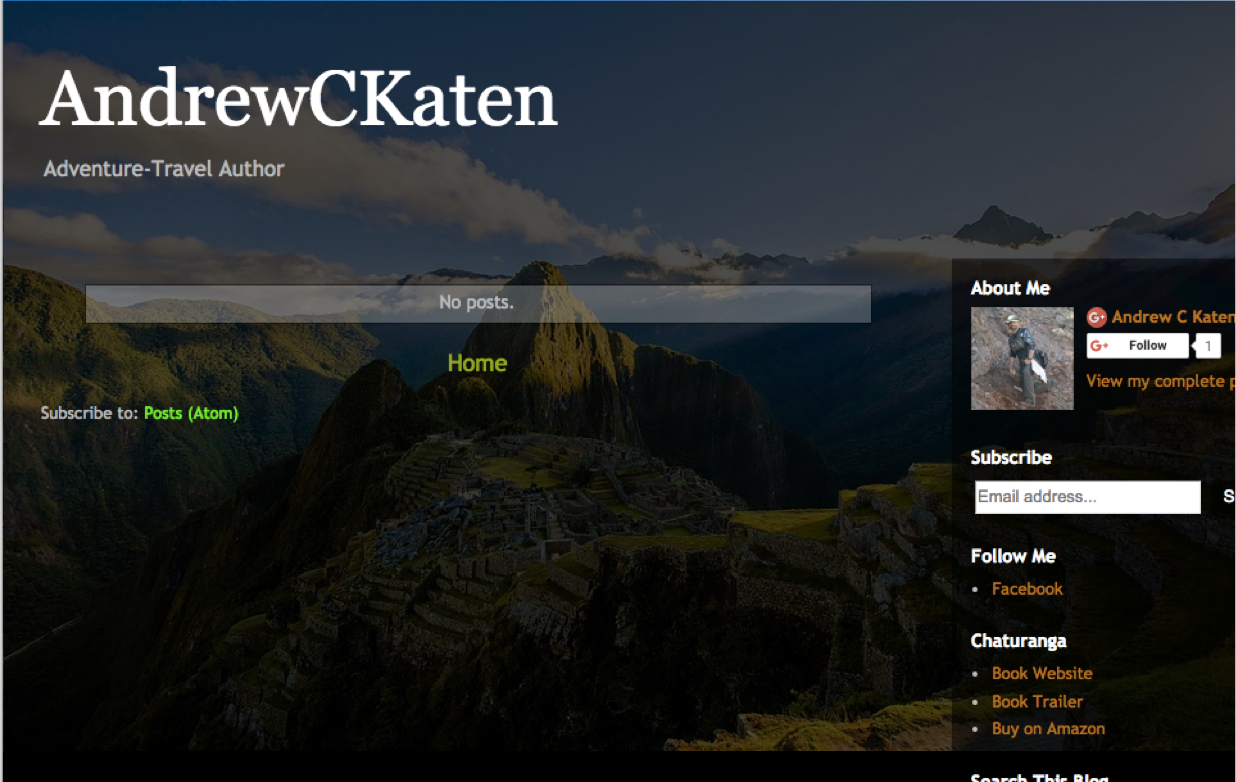
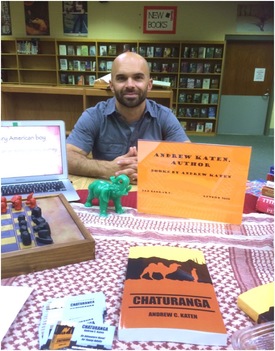
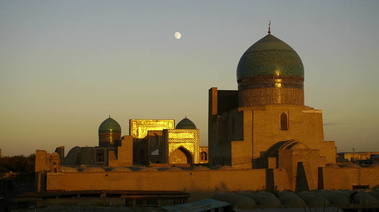
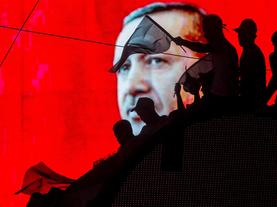
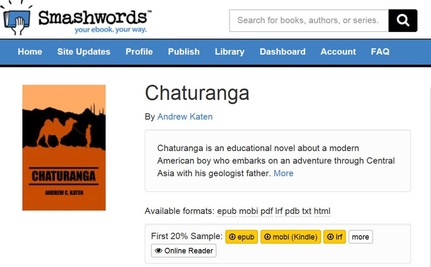
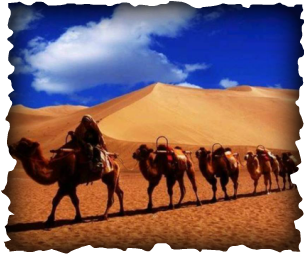
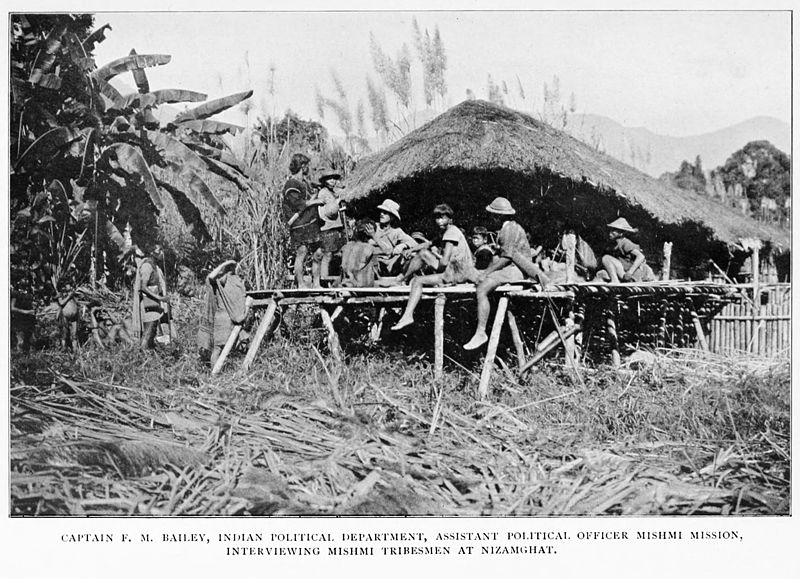
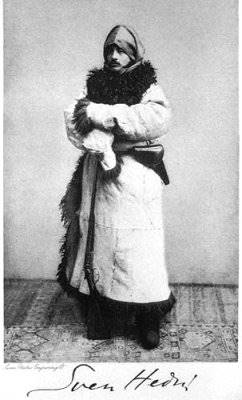
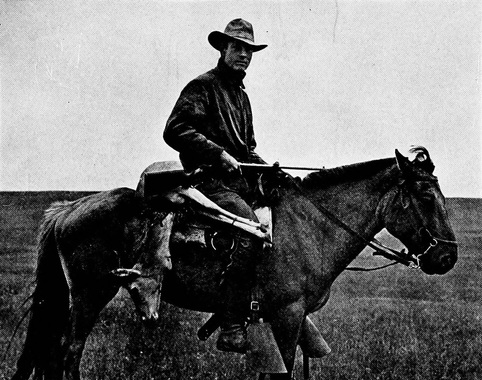

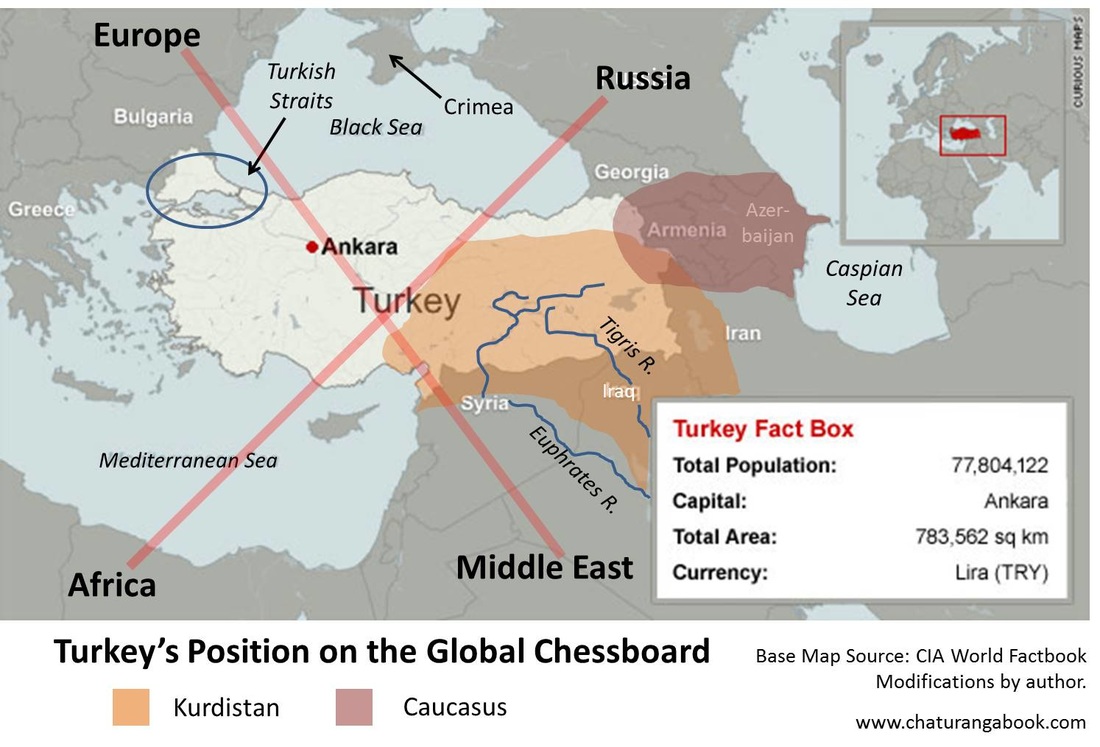
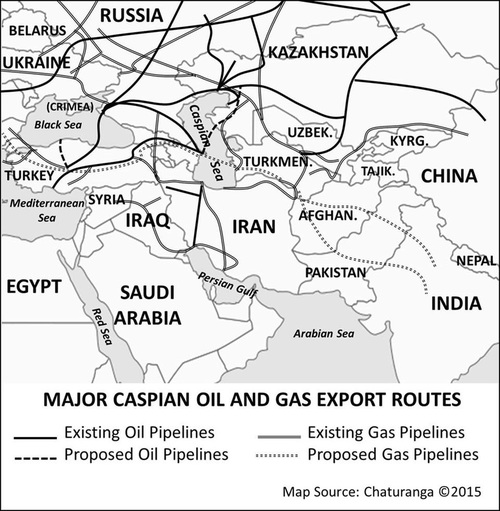
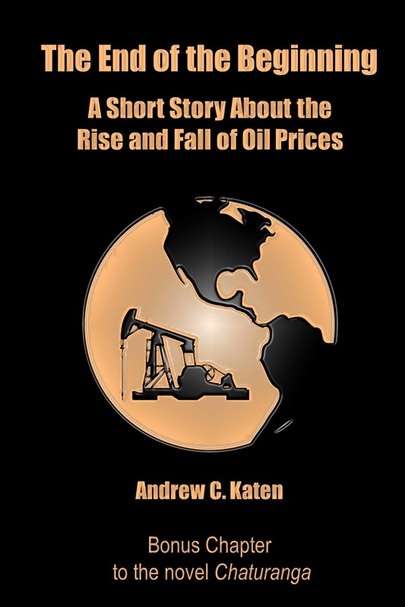

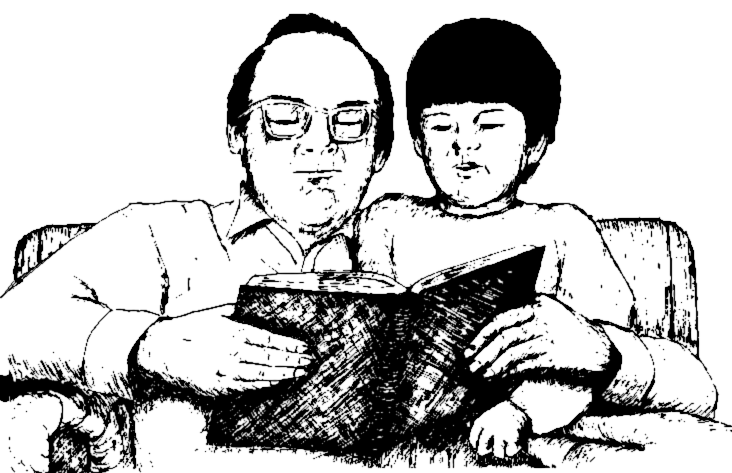
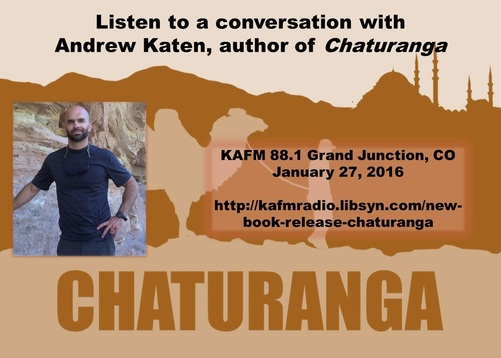

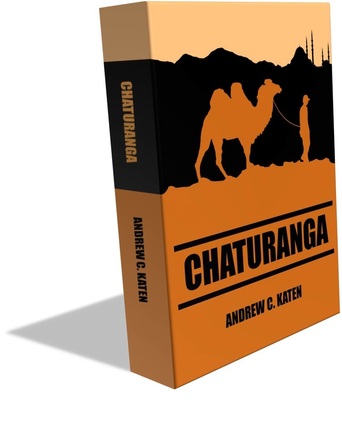
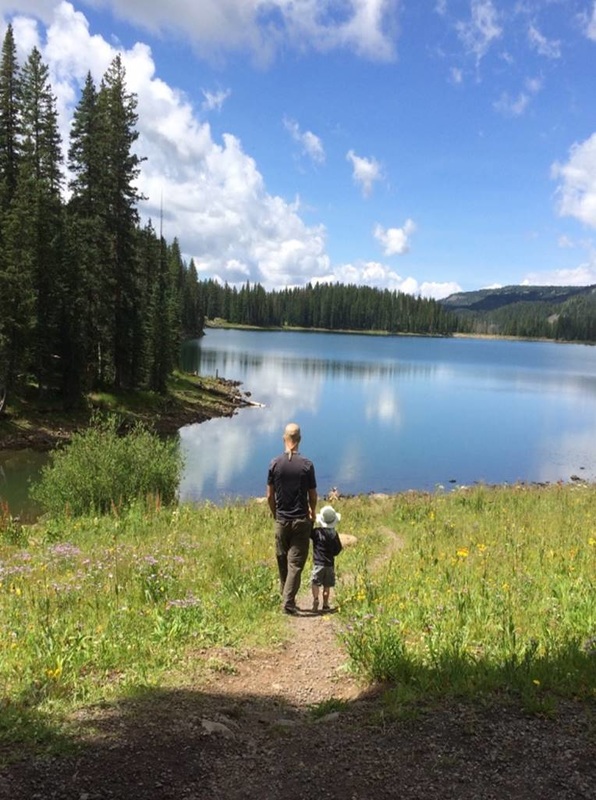
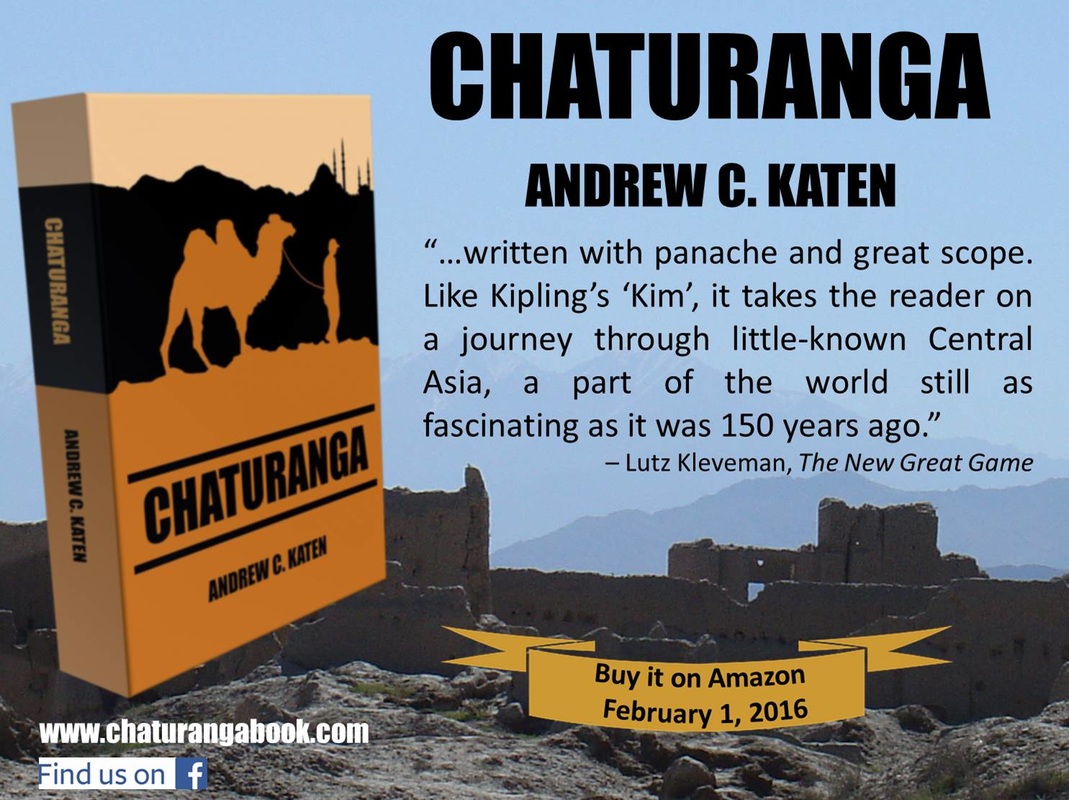
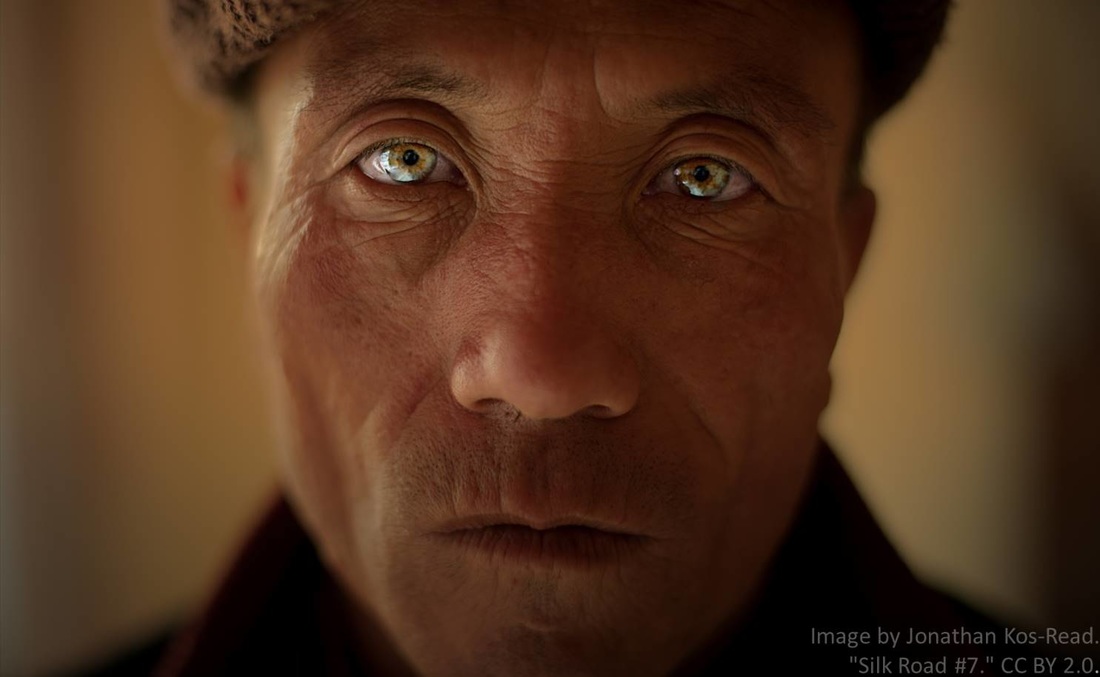
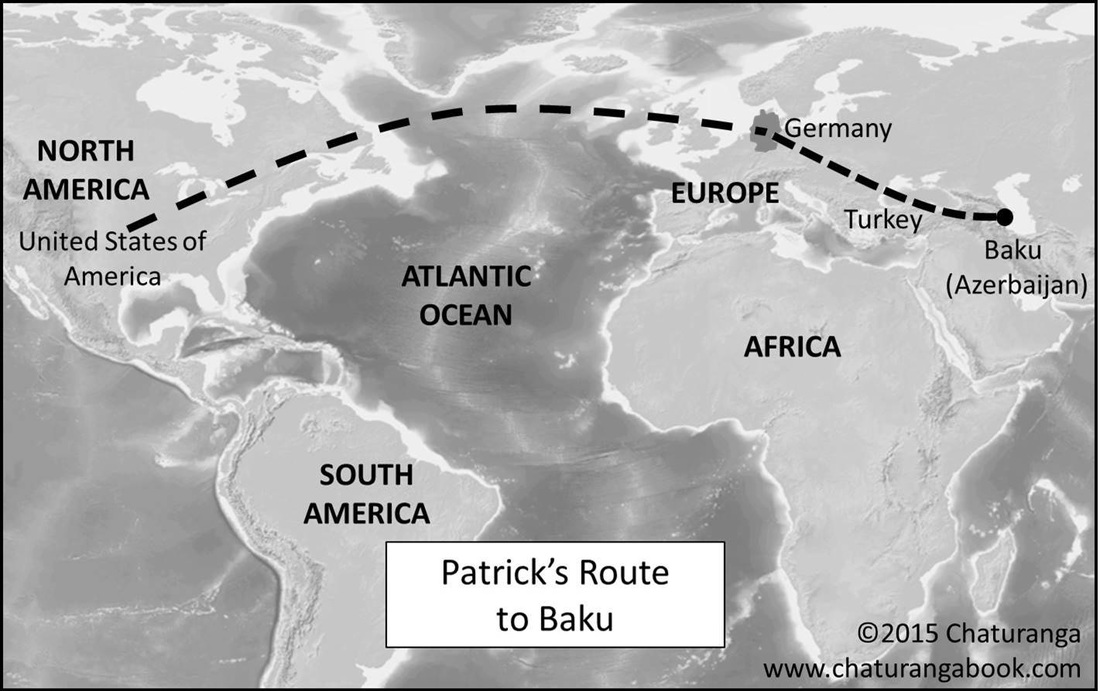
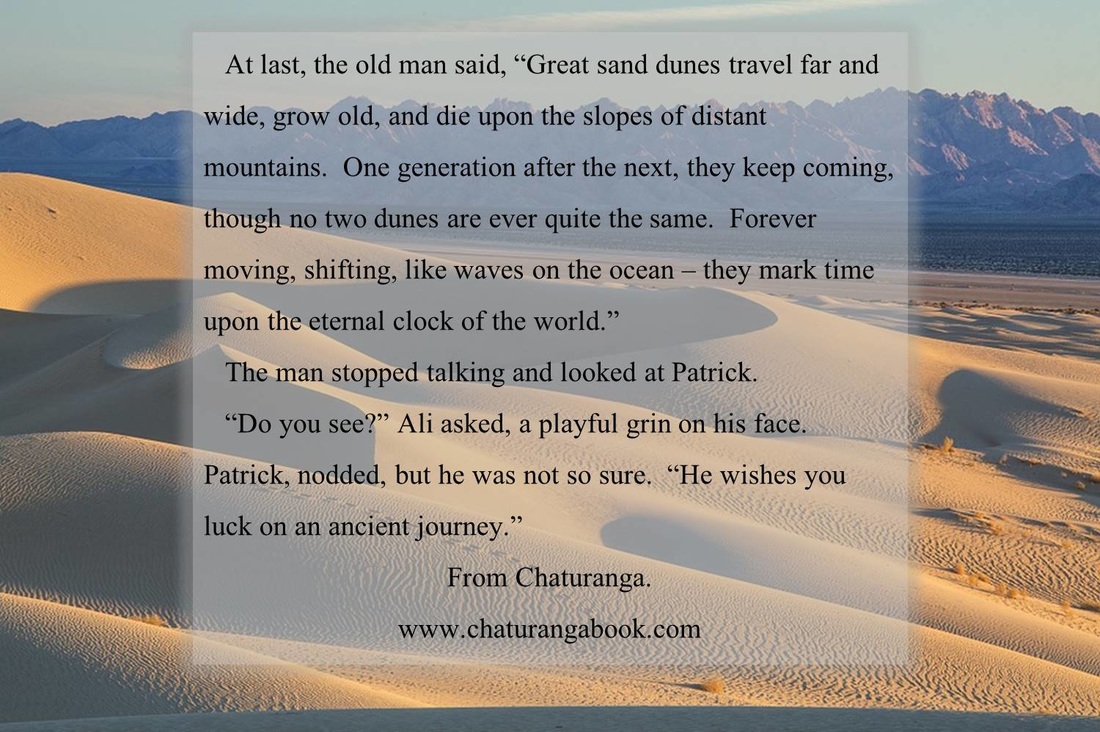
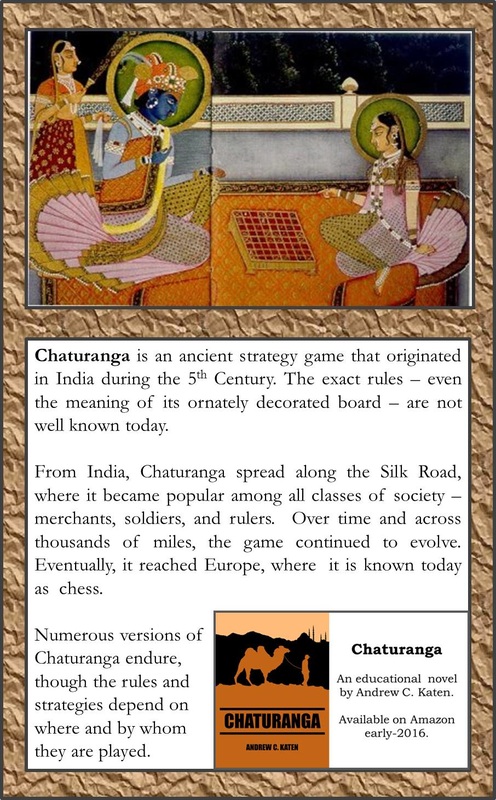
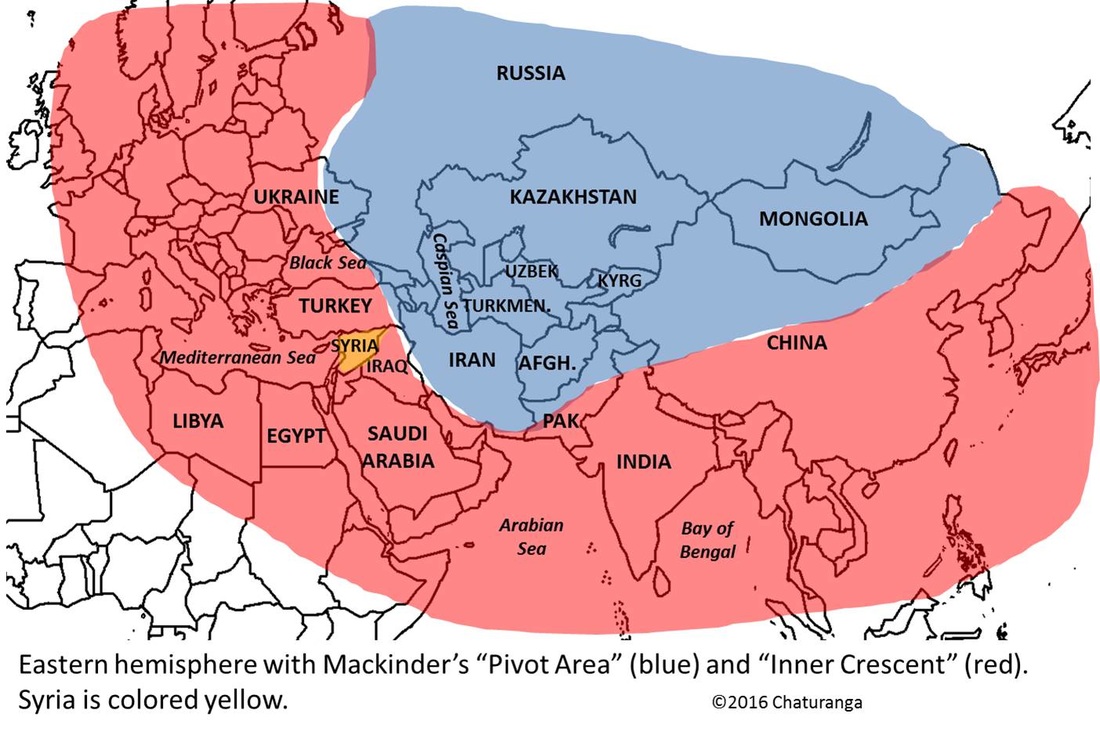
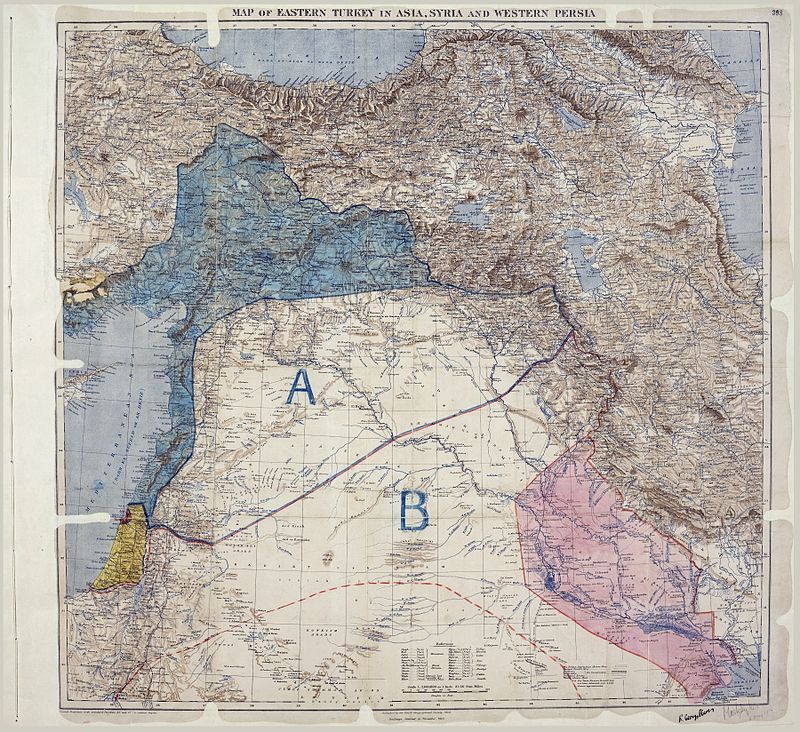
 RSS Feed
RSS Feed